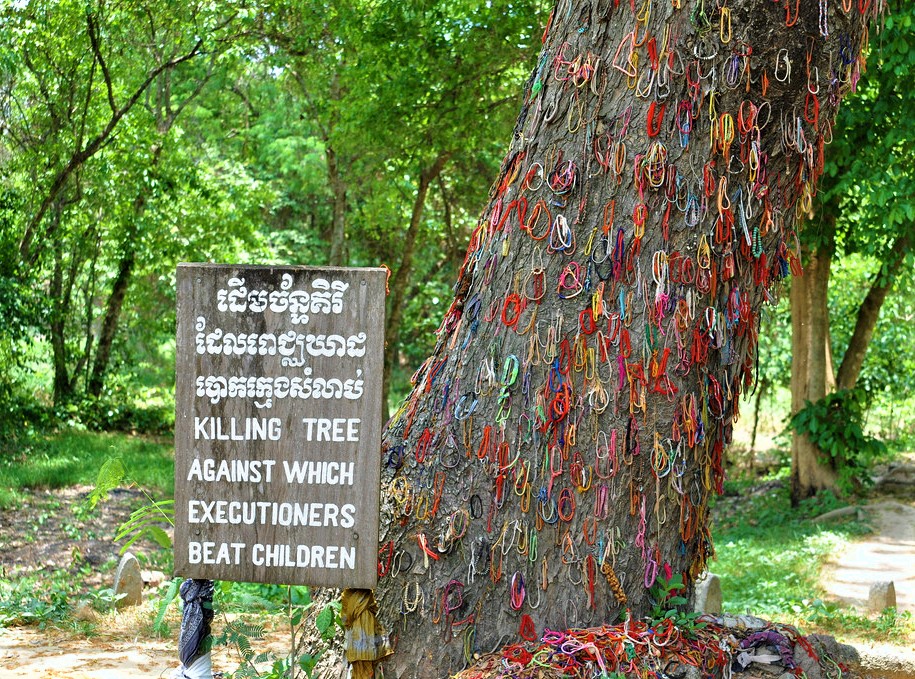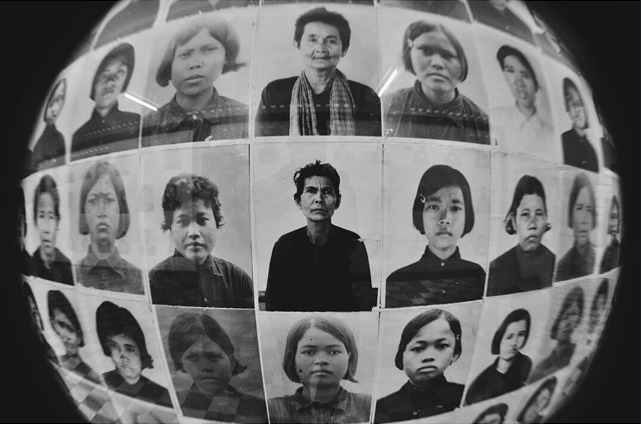Global Service Corps has provided volunteer services to disadvantaged individuals, communities and countries since 1993. It would be difficult to find another people and country that has experienced more ongoing tragedies and is more in need of volunteer support than Cambodia.
Throughout the country’s history, Cambodia has experienced domination by foreign governments, neighboring states and home grown elements. One of the saddest chapters in the history of Cambodia was written by an indigenous radical communist movement called the Khmer Rouge.
The Khmer Rouge movement took shape in Cambodia during the time of the Vietnam War and the Cambodian civil war in the 1970s. Leaders of the movement espoused ultra-Marxist theories and were able to put them into practice in Cambodia in 1975. On April 17, the Khmer Rouge army invaded Phnom Penh, Cambodia’s largest city and capitol, and overthrew the government of Cambodia. Thus began a reign of terror that included the forced resettling of all Phnom Penh residents into the rural areas where they were forced to become peasant laborers with totally inadequate shelter and food. To force the population into a society of equality, the Khmer Rouge tortured and murdered anyone deemed to be a threat. This included the murder of intellectuals, doctors, teachers and monks, and the destruction of almost all of Cambodia’s 3,600 Buddhist temples.

It is estimated that only 3,000 of Cambodia’s 50,000 monks survived the persecution of hard labor, torture, starvation, and execution. Thus began the atrocities at the Killing Fields found throughout Cambodia. Although the Khmer Rouge army was defeated by Vietnam in 1979, remnants of the Khmer Rouge continued their reign of terror from outposts in northern Cambodia until they finally surrendered completely in 1999.
During the Khmer Rouge genocide, two to three million Cambodians had died of starvation, disease, overwork, torture, and execution. At the same time, much of civil society infrastructure was decimated, a tragedy from which Cambodia is still trying to recuperate.

Another sad chapter in the history of Cambodia occurred during the Vietnam War. In 1969, the US began bombing the Cambodian countryside to destroy North Vietnamese military installations and supply lines of the Ho Chi Minh trail. The United States dropped upwards of 2.7 million tons of bombs on Cambodia, exceeding the amount it had dropped on Japan during WWII (including Hiroshima and Nagasaki) by almost a million tons. During this time, about 30 per cent of the country’s population was internally displaced, which wreaked havoc on the country’s rural population and agrarian economy.
In May 1970, American ground forces invaded Cambodia in search for Vietnamese Communists, and in the process killed and wounded civilians and destroyed marketplaces, rice fields, and villages. The continued bombing widened the political rift between Cambodia’s rural and urban classes, sowing the seeds of the revolutionary horrors and genocide of the Khmer Rouge. It is estimated that more than 250,000 Cambodians were killed by the US.
Long-lasting results of the Khmer Rouge regime and genocide and the Vietnam War are still evident in Cambodia today. The Cambodian culture as a whole has experienced Post Traumatic Stress Disorder (PTSD) from which it is still recovering. GSC and our volunteer participants are offering what service and assistance we can to help the Cambodian people acquire the training and skills to improve their lives, rebuild their civil society, and overcome these tragic chapters in its history.
To request more information, click Here
To apply for a program, click Here
To email GSC, click Here
